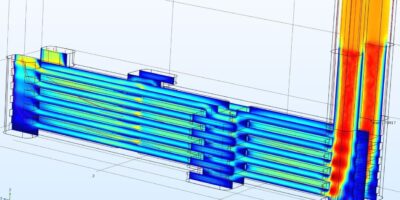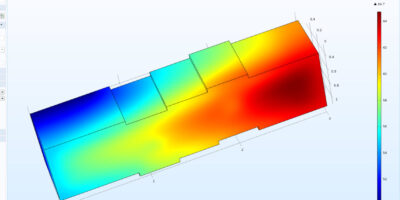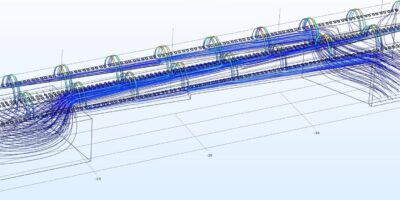XVI technologies
Brad Siskavich owner of xVI Technologies (http://xvitech.com/thermal.html) approached us to help them optimize cooling of solar reciever tiles. The receiver tile assemblies have 3 main functions. One is to properly constrain the solar cells in space around a graphite core that is being heated to 3000K. The second function is to actually convert the energy being emitted from the graphite core into electricity. The third is to cool the photovoltaic cells doing the energy conversion.
Brad and Richard Norman from Terra Frima Innovations (https://terrafirmainnovations.com/) had an initial design for the entire cooling system. We first started with doing the CFD and thermal analysis of an individual microchannel. The fluid flow geomrty of the microchannel is shown in Fig 1. The length of each microchannelis approximately 3mm. The results of the CFD and thermal analysis of the microchannels are shown in Figures 2 and 3.
Once we completed the analysis of the individual microchannel, we were then able to create a simple geometry that approximated the pressure drop across each microchannel. This was needed due to the large number of microchannels in each diffuser. The diffuser was created in order to evenly distribute coolant to each of the microchannels. Since the recievers are triangular in shape, unique geometry was needed for the inlet and outlet channels that fed the microchannels. We started with some simple arch shapes (Fig 4) then simplified the shape even further so that we could run the flow through the entire diffuser (Fig 5).
Overall this was a really difficult technical simulation. Obviously this brief synopsis is a general overview. It took several months to complete the simulation and it certainly challenged more than just our simulation ability. Doing the CAD modeling for manufacturing the final parts was extremely challengin due to the small scale and large number of pattern insances in the 3d model.
The team consisted of Brad Siskavich (xVI technologies), Richard Norman (Terra Firma Innovations), Eric Lindsley (PHD), Paul Hammerstrom (PHD),
Jesus Lucio (PHD).






